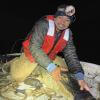Hello everyone,
I ran across an article today (at the bottom) that talks about an open-source, kinetic energy harvesting collar ("Kinefox"). It sounds pretty neat...anyways, thought I would share the resources below if anyone is interested.
Science paper
A novel kinetic energy harvesting system for lifetime deployments of wildlife trackers | PLOS One
Wildlife tracking devices are key in obtaining detailed insights on movement, animal migration, natal dispersal, home-ranges, resource use and group dynamics of free-roaming animals. Despite a wide use of such devices, tracking for entire lifetimes is still a considerable challenge for most animals, mainly due to technological limitations. Deploying battery powered wildlife tags on smaller animals is limited by the mass of the devices. Micro-sized devices with solar panels sometimes solve this challenge, however, nocturnal species or animals living under low light conditions render solar cells all but useless. For larger animals, where battery weight can be higher, battery longevity becomes the main challenge. Several studies have proposed solutions to these limitations, including harvesting thermal and kinetic energy on animals. However, these concepts are limited by size and weight. In this study, we used a small, lightweight kinetic energy harvesting unit as the power source for a custom wildlife tracking device to investigate its suitability for lifetime animal tracking. We integrated a Kinetron MSG32 microgenerator and a state-of-the-art lithium-ion capacitor (LIC) into a custom GPS-enabled tracking device that is capable of remotely transmitting data via the Sigfox ‘Internet of Things’ network. Prototypes were tested on domestic dog (n = 4), wild-roaming Exmoor pony (n = 1) and wisent (n = 1). One of the domestic dogs generated up to 10.04 joules of energy in a day, while the Exmoor pony and wisent generated on average 0.69 joules and 2.38 joules per day, respectively. Our results show a significant difference in energy generation between animal species and mounting method, but also highlight the potential for this technology to be a meaningful advancement in ecological research requiring lifetime tracking of animals. The design of the Kinefox is provided open source.
Github Page
GitHub - TroelsG/Kinefox: The wildlife tracker powered by kinetic energy
The wildlife tracker powered by kinetic energy. Contribute to TroelsG/Kinefox development by creating an account on GitHub.
The article I read
Energy Harvesting for Wearable Technology Steps Up - IEEE Spectrum
Tiny worn devices won’t need batteries thanks to these innovations
3 November 2023 2:24pm
Hi Thomas !
Thanks for sharing! I know one of the Danish authors of the KInefox paper. It is very cool stuff and we hope to one day use something like this on muskoxen in Greenland.
Some of the limitations are obviously the relatively limited number of daily fixes. Also, we would probably need satellite based communication, but since the authors from Max Planck are also heavilly involved in the https://www.icarus.mpg.de/en project, I hope this kinetic energy harvesting gets incorporated in the satellite based ICARUS trackers one day.
The article you linked to refered to this paper with a dizzying list of recent energy harvesting studies:
It also seems well worth a look.

Rob Appleby
Wild Spy
3 November 2023 3:11pm
This is very cool @ThomasGray_Argos !! I tried years ago to build a benchtop version of something similar, using a 'kinetic' torch assembly, but never got much further than some very crude designs. I even approached Seiko about their watch mechanisms, but in the they weren't interested...
It's really great to see this technology get applied and I hadn't heard of the Kinetron microgenerator the researchers used. They did a fantastic job designing their system and bonus points for releasing it all to open-source! The only thing I couldn't see were costs or a bill of materials (and I could've easily missed it), as I was keen to see how much the Kinetron microgenerator was. The hybrid capacitor they used was great value at AU$7.19.
My next project is to try harvesting radio waves using something like this:
Urban environments might have enough ambient sources of radio waves that no additional transmission stations are needed, but for remote locations, purpose-built transmitters could work for critters that have defined, and relatively small home ranges.
Anyway Thomas, thanks heaps for sharing and very interesting and encouraging.
Rob

Herdhanu Jayanto
KONKLUSI (Kolaborasi Inklusi Konservasi - Yayasan)
17 January 2024 7:45pm
This is super cool!
I was wondering if the development will further touch marine or aquatic animals, make it like water wheel (even might give burden to aerodynamic). Thank you for sharing!
Best,
Dhanu















Lars Holst Hansen
Aarhus University